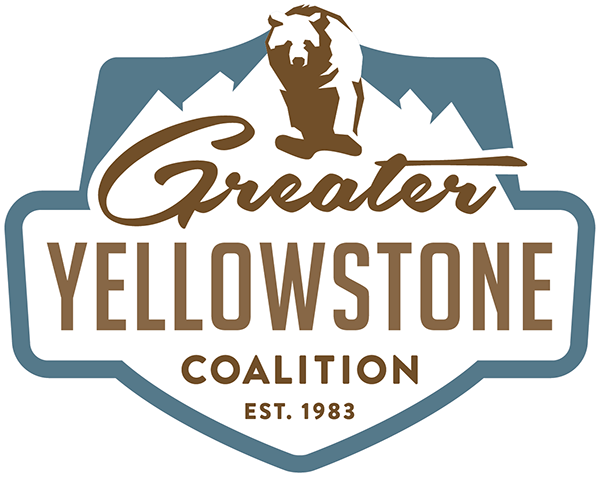Advocating for Yellowstone Wolves: We’re Committed to Durable Solutions
Wolves play a critical role in our ecosystem, and Yellowstone wolves represent an iconic conservation success story. Since their successful reintroduction in 1995, wolves have made a remarkable comeback which for many conjures a sense of conservation pride and optimism.
Earlier this year, we saw continued progress for Yellowstone wolves in Montana. GYC and several partners worked together to build a strong coalition of local organizations, impacted businesses, and conservation interests that successfully advocated for a return to two separate wolf management units (WMUs) just north of Yellowstone National Park – WMUs 313 and 316 – and hunting quotas of three wolves in each unit, along with a ban on the use of motion tracking devices for hunting wolves.
These incremental, yet critically important changes to state policies aim to improve conditions for Yellowstone wolves and the people who depend on them. During this year’s wolf hunting and trapping season, these changes reduced the risk that entire Yellowstone packs could be eliminated just north of the park boundary.
The alpha female of the Canyon Pack in the Lower Geyser Basin. (Photo NPS/Jim Peaco)
Yet, wolf conservation is undoubtedly riddled with challenges. Recent reports indicate five wolves were killed in WMU 313 just north of Yellowstone, despite this season’s three-wolf quota.
A group of hunters shot and killed four wolves in WMU 313 on the morning of October 25, and Montana Fish, Wildlife, & Parks (FWP) later confirmed the loss of an additional wolf believed to have been wounded. In Montana, when a quota within a WMU is met, FWP provides a 24-hour notice prior to closure of hunting in the unit. It is always possible that the quota can be met and exceeded within the same day, especially when an unlimited number of licenses are issued to hunters, as is the case with wolves. This is how five wolves were killed in WMU 313, despite the quota of three.
All five wolves were a part of the same Yellowstone National Park pack. GYC and our partners advocated for and secured a solution that we hoped would prevent this level of pack disruption, and unfortunately that was not the case. While splitting the area north of Yellowstone into two WMUs and implementing a quota of three wolves in each unit did not work as well as hoped, it was still an important step in the right direction for wolf management in Montana. Last year, for example, 13 Yellowstone wolves were killed prior to implementation of this approach.
Yellowstone 8-Mile Pack wolf pups. The five wolves killed were part of the 8-mile pack. (Photo NPS/Dan Stahler)
GYC advocates for science-based and ethical wolf management policies that acknowledge the value of wolves. Despite the outcome of this season, this year’s regulations in the units bordering Yellowstone represent a small but crucial step in that direction. The coalition of organizations and businesses that advocated for this incremental progress has elevated the social and economic value of protecting Yellowstone National Park wolves with the Montana Fish and Wildlife Commission, and in doing so has created an avenue for continued collaborative problem solving.
GYC is committed to building consensus for durable solutions that protect Yellowstone wolves. In the coming months, we will identify additional long-term strategies for protecting Yellowstone National Park wolf packs during the Montana wolf hunting and trapping season. We are grateful for our partners at Park County Environmental Council, Bear Creek Council, National Parks Conservation Association, and the Wild Livelihoods Business Coalition for working alongside us to advocate for Yellowstone wolves.
— Brooke Shifrin, Wildlife Program Manager (Bozeman, Montana)



